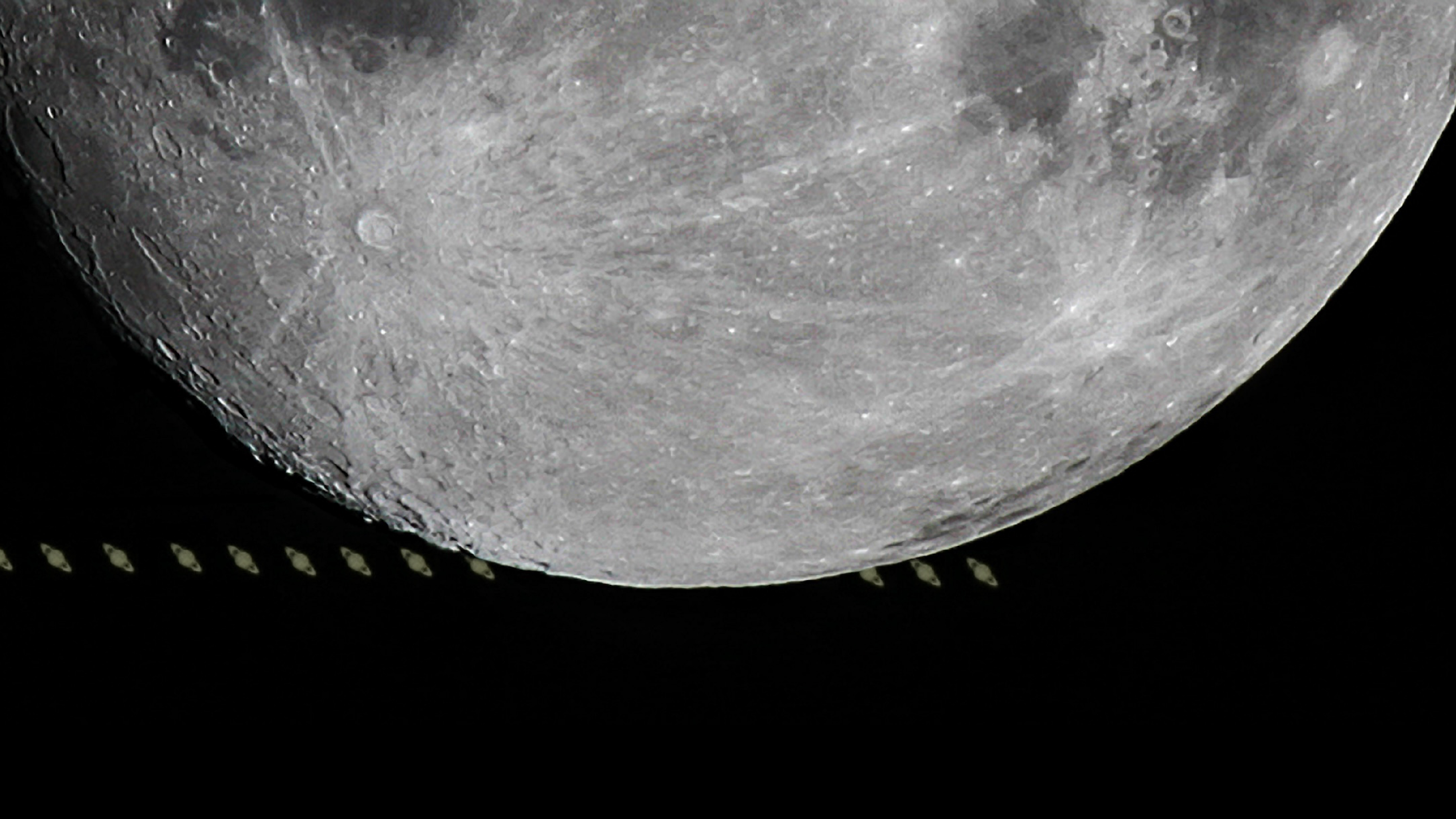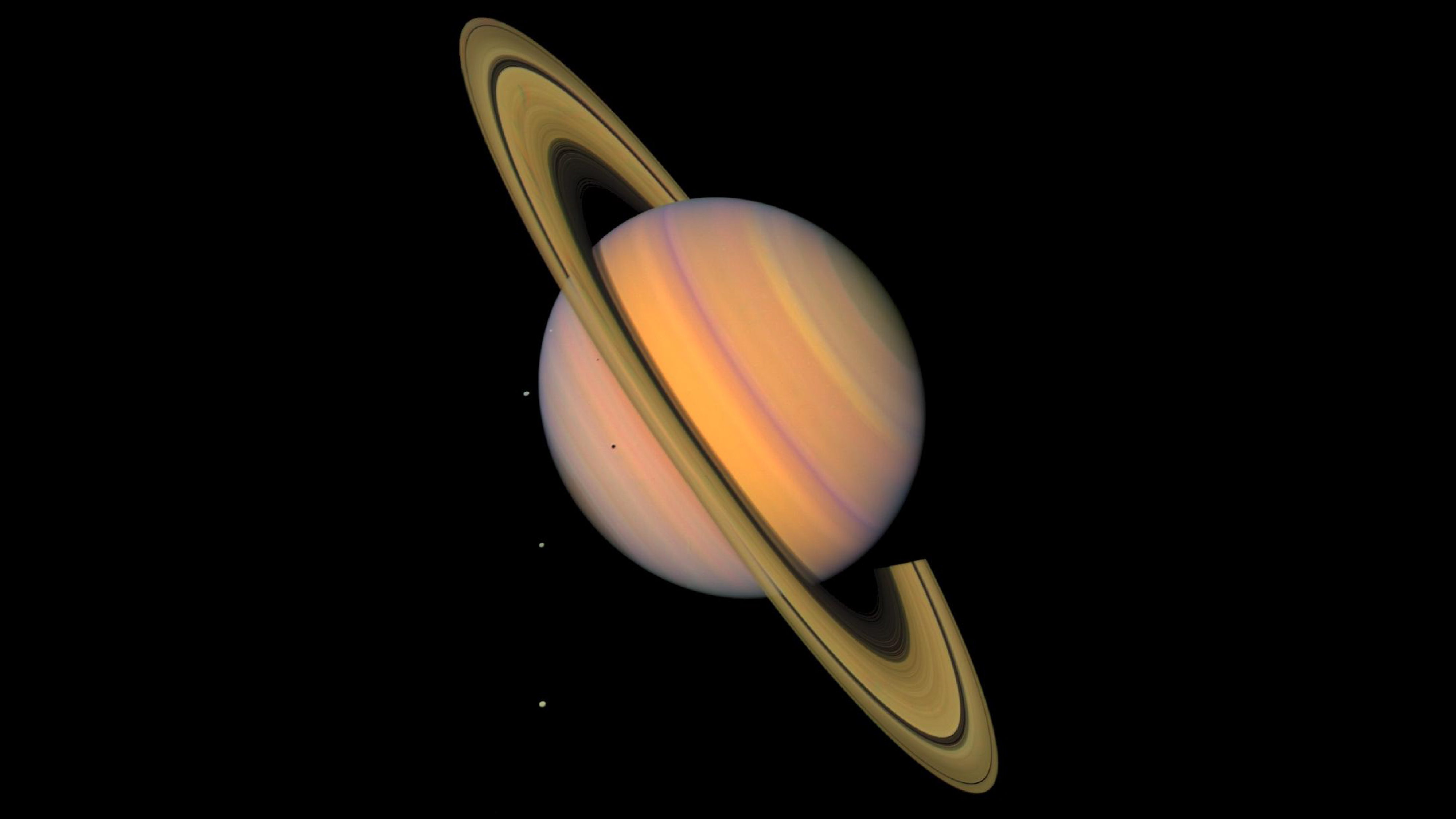The blue supermoon will 'swallow' Saturn tonight — here's when the rare 'lunar occultation' begins
Here's everything you need to know to see the moon as it occults, or passes completely in front of, the bright planet Saturn tonight.

Get your stargazing binoculars out! Overnight from Aug. 20 to 21, the blue supermoon will pass in front of — or occult — the ringed planet Saturn. Although Saturn and the moon will be low in the sky when the occultation starts, they will be easily visible when the event ends. After Saturn emerges from behind the moon, the large planet will stay close to the moon all night.
Here's everything you need to know to see this stunning event.
How to watch
Viewing Saturn with the naked eye isn't ideal; if you don't use a good backyard telescope or pair of binoculars, Saturn will be indistinguishable from any bright stars in the sky. The best way to view Saturn is to use a pair of high-powered binoculars or a telescope so that you can see its signature rings and moons. If you use a telescope, you can see Saturn in even more detail: in addition to seeing its rings and moons, you will be able to see the bands of clouds at its surface as well.
On Aug. 20, Saturn and the moon will rise in the southeastern part of the sky and set in the southwestern part of the sky. Saturn will lie in the constellation Aquarius, but since Saturn will be so close to the moon, you probably won't need to use Aquarius as a waypoint.

When to watch
Saturn and the moon will rise around 9 p.m. local time on Aug. 20, and will set around 8 a.m. local time on the 21st. Depending on your vantage point, they will reach their highest point in the sky between approximately 2 and 3 a.m., reaching a height of about 42 degrees above the horizon, according to theskylive.com.
The moon will pass in front of Saturn around 8:44 p.m. local time. Depending on your exact location, the occultation will occur immediately before or immediately after the two objects cross the horizon.
Get the world’s most fascinating discoveries delivered straight to your inbox.
If you miss the moment when the moon starts to occult Saturn, you may be able to see Saturn emerge from behind the moon, which will happen around 12:38 a.m. local time, when the moon is highest in the sky.
You can use apps like Stellarium to check on the precise times in your specific location.
Observing conditions
On the night of Aug. 20-21, the moon will be bright and full. Normally, dark skies are the most ideal for observing because moonlight can wash out other objects in the sky. However, Saturn is quite bright, so it will still be clearly visible despite the full moon.
The occultation of Saturn might not be visible to all observers because the apparent position of Saturn and other celestial objects can vary up to two degrees depending on your position on Earth. (This apparent shift in an object's position depending on your vantage point is called parallax). However, even if you just miss the occultation, you will still be able to see Saturn make an extremely close approach to the moon the entire night.

Gretchen Rundorff is an astronomy enthusiast who is passionate about science communication and empowering people to learn about the night sky. She has seen multiple meteor showers, has seen a partial solar eclipse in 2016, has photographed the 2024 total solar eclipse, and has used telescopes to view planets and star clusters. Gretchen holds a bachelor’s degree in philosophy and French from the University of Pittsburgh, and a graduate-level certificate in copyediting from the University of California San Diego.


